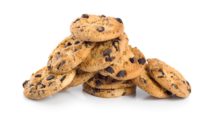A significant portion of U.S. consumers are watching their sugar intake, whether they’re concerned about watching their weight, managing diabetes, or worried about some other aspect of their health. However, while they’re willing to give up sugar, most aren’t about to completely forgo cookies, cakes, and other sweet treats.
That’s where snack and bakery producers can come in—through intelligent formulation with sugar alternatives, they can help shoppers reach a delicious balance between good health and great taste. To learn more, Snack Food & Wholesale Bakery checked in with Thom King, CEO of Icon Foods.
Jenni Spinner: Could you please share the ‘elevator presentation’ of Icon Foods’ solutions for producers in the bakery space who are looking for sugar alternatives?
Thom King: Icon Foods has perfected the process of eliminating sugars from baked goods and replacing them with all-natural substitutes. When formulating reduced-sugar or zero-sugar-added baked goods, creating balanced sweetness is paramount. Equally important is enhancing mouthfeel and texture without compromising flavor. This can be accomplished by blending high-intensity sweeteners such as stevia and monk fruit with prebiotic fibers and bulking sweeteners like erythritol and allulose. Allulose is particularly suitable for baked goods as it participates in the Maillard reaction, imparting a desirable golden hue. Zero sugar added inclusions like our Sweet Bitz line of chocolate chips, our Flavor Bitz and ShellBe Candies, further enhance the appeal of reduced sugar baked goods by introducing additional flavors and textures.
JS: Please talk about consumers’ increasing interest in reducing their sugar intake, and how bakery producers are rising to meet the challenge.
TK: Consumers don’t want added sugars. According to Innova Market Insights, brands are increasingly opting for low sugar claims on packaging. Since 2017, low sugar claims on confections’ new product launches have grown 21%, while reduced sugar has grown by 15% and ‘no added sugar’ by 16%. A recent Mintel study reinforced these findings. The survey anticipates a rising trend in consumer preference for minimally processed, clean-label food and beverages in 2024. This shift is driven by heightened scrutiny of highly processed, overly processed, or ultra-processed foods in the food and beverage industry. Consumers are looking at ingredients, nutrition, and production techniques more closely. Bakery producers can meet the growing consumer demand for reduced sugar baked goods by replacing the sugar in their formulas with natural sweeteners and fibers.
JS: Speaking of challenges, it can be a struggle to maintain the balance between the consumer's need to reduce their sugar intake, and to enjoy indulgent bakery treats. Could you please share how bakery producers have been rising to those challenges, and the types of products they’ve delivered?
TK: High-protein cookies have been particularly successful as better-for-you, yet still indulgent treats with both reduced sugar and zero added sugar claims. The right sweeteners, or better yet combination, can achieve the same sweetness, flavor, and perfect browning you would expect with sugar.
Many of them also use alternative flours, such as almond flour, coconut, or lupin bean flour that don’t contain the same humectant or binding properties of wheat flour, which you need if you’re looking to create a rich, chewy soft cookie. The way those challenges have been met is by fiber stacking. Using a soluble tapioca fiber in both a powder and syrup and stacking that with inulin really helps bind and helps in maintaining a chewy, indulgent mouthfeel. It also drives down your net carb impact by being able to subtract the fibers from your total carbs for added appeal on the nutritional facts panel as well as a prebiotic fiber callout.
![]() JS: In general, how have suppliers like Icon Foods helped producers deliver tasty reduced sugar/sugar alternative baked goods?
JS: In general, how have suppliers like Icon Foods helped producers deliver tasty reduced sugar/sugar alternative baked goods?
TK: The way the industry approaches sugar reduction formulation and sweeteners has changed significantly in recent years. Rather than focusing on a single sweetener ingredient, there has been a notable shift in the utilization of blends comprising multiple sweeteners. These blends typically incorporate a high-intensity sweetener, a bulking sweetener, and occasionally a sweetness modulator.
Each sweetener imparts its own taste and functional properties. While sugar’s sweetness builds, rounds, and drops off slowly, high-intensity sweeteners tend to hit sharply and then linger. The presence or absence of other ingredients can magnify or mute sweetener tendencies. Ingredient suppliers must understand the nuances of each sweetener, the ways that it functions, and the ways that it interacts with other ingredients, to formulate sweetener blends that hit the right notes.
If replacing sweetness were the only criteria, developers would be sufficiently challenged. But taste is just one aspect to consider when reducing or removing sugar from a formulation. Stevia and monk fruit are up to 250 times sweeter than sugar. Because so little is used when replacing sugar, supplementing lost volume must be considered. In baked goods, sugar also provides humectancy so cakes, muffins, and breads stay softer. The moisture level of the product remains consistent and water activity is controlled for improved shelf life.
This has led to the development of sophisticated sweetening systems capable of serving as a 1:1 sugar replacement that hit all the targets from sensory to functional attributes. Blends are often customized to meet the specific requirements of the application, such as participating in Maillard, yeast activation, humectancy, etc. Icon Foods offers a variety of sweetener blends, including combinations of stevia, monk fruit, erythritol, allulose, fibers, and more. Our research and development team also offers custom sweetening solutions.
Specifically, our sweetener blend IconiSweet was designed with creating delicious baked goods in mind. IconiSweet is a blend of allulose, erythritol, stevia, and monk fruit. This 1:1 replacement with sugar continually grows in popularity in the baking category. Allulose browns and participates in Maillard, however, it tends to burn at high temperatures. The addition of erythritol suppresses the burning tendency and lowers water activity in finished goods. Since both allulose and erythritol are 70% as sweet as sugar, the addition of stevia and monk fruit brings the blend to sweetness parity with sucrose. Additionally, the two glycosides found in monk fruit and stevia when combined have masking properties that help with potential off-notes.
JS: Related to that, the various Bitz products Icon has come out with have helped deliver flavor, better health, and a bit of fun. Could you please tell me about the different products in the Bitz line, and what types of items they’re best for?
TK: The Icon Foods SweetBitz line is constantly expanding. Our chocolate chip portfolio includes 2M and 4M dark chocolate baking chips, high protein chocolate chips, and white chocolate chips. These zero-sugar-added inclusions are non-GMO and made with diabetic-friendly sweeteners—they melt and bake like conventional chocolate chips. Our sprinkles come in chocolate and multicolored varieties, contributing 0g of sugar per serving. They are ideal toppings for cakes and frosted cookies.
Last year we introduced Flavor Bitz, small morsels (about 5mm) formulated with stevia and erythritol, that are offered in five flavors: Mint Chocolate, Strawberry, Peach, Blueberry and Cinnamon Dolce. Flavor Bitz will soften applications creating pockets of concentrated flavor, and are well well-suited for baked goods including bars, muffins, cookies, and cupcakes. They also play a functional role improving texture and consistency in baked goods by driving down water activity and thus extending shelf life.
Last year, we also added Peanut and White Chocolate options to our ShellBe Candies line of zero-sugar, candy-coated lentils (similar to an M&M). ShellBe Candies make great toppings for baked goods including cookies and cakes, as well as inclusions in snack and trail mixes.
JS: What advice do you want to share with producers who are working to elevate their game when it comes to sugar-reduced/alternative-sweetener items?
TK: The reduced sugar trend isn’t going anywhere: manufacturers should have an open mind when it comes to exploring alternative ingredients and ways to improve flavor, texture, and mouthfeel of their reduced sugar offerings. Differentiation is key, anything you can do to set your product apart will help, especially as more reduced-sugar products hit the market. One way is through the use of inclusions to add color, texture, and indulgence. Everything from chocolate chips and sprinkles for bits of color and flavor – those things catch the consumer’s eye. That extra pizzazz can set your baked goods apart as you lean into the indulgence consumers are looking for. And when they see that there's no added sugar or it’s still low sugar, it creates even more customer appeal.
Making the switch to zero sugar inclusions can significantly impact your nutritional facts panel label as it's estimated more than 10% of added sugars can come from inclusions. This is especially important in light of the FDA's proposal for front-of-package labeling for added sugars and consumer demand for healthy, ready-to-eat products on the rise.
Also, people don’t pay enough attention to fillings and frostings. When you look at baked goods or baked treats, most of the added sugars are coming from the filling or the frosting. The actual baked good itself doesn't usually have a ton of added sugar – it's the fillings, frostings, and glazes that add the most added sugar. What may be surprising is that there are super easy solutions, using allulose or erythritol, for creating a delicious filling with reduced or no added sugar.





